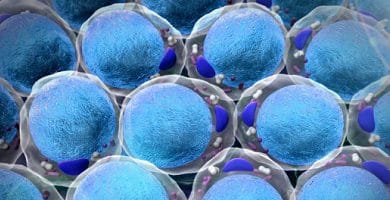What is an exothermic reaction?
We explain what is an exothermic reaction and its differences with an endothermic reaction. In addition, examples of this chemical reaction.
-
What is an exothermic reaction?
An exothermic reaction (from Greek – exo , “outward”, and thermos , “heat”) is understood to be those chemical reactions that produce or release energy , whether in the form of heat, light or other forms of energy. They are in that sense contrary to endothermic reactions , which absorb energy.
Every exothermic reaction is characterized in that the energy levels of its reagents are higher than those of its product , which means that part of the chemical energy contained in its bonds has been released in a new way. These reactions are of the utmost importance for biochemistry , for example, since they are precisely those that a living organism propitiates in its metabolism for energy.
Most of the exothermic reactions are oxidation , and if they are very violent they can generate fire, just like combustion. The same occurs in the transitions of matter from one state of aggregation to another of lower energy, such as gas to liquid (condensation), for example, or from liquid to solid (solidification).
In fact, many exothermic reactions are dangerous to health because the energy released is abrupt and uncontrolled, causing burns or other damage to living beings.
-
Exothermic and endothermic

Every chemical reaction implies a variation in energy levels that, let’s remember, is a constant in our universe : energy cannot be created or destroyed, it can only be transformed from one type to another.
In this sense, chemical reactions can absorb energy (endothermic) to transform their reagents or compose a new form of matter, or they can release energy (exothermic) by doing so.
For example, some atomic bonds are very stable and require an increase in the internal energy of the molecule to be able to break and release its molecular components. Such is the case of electrolysis: electricity is added to break the molecule, for example, from water.
In other cases, said ruptures rather generate energy, since the chemical energy contained in said atomic bonds is released and exceeds that of their reagents, usually releasing heat or light. It all depends on the nature of the reagents and the reaction itself.
-
Examples of exothermic reaction

Some known exothermic reactions are:
- Combustion . By injecting a minimum of caloric energy into a fuel (such as gasoline, natural gas, methane gas, etc.) in the presence of oxygen, an exothermic phenomenon known as combustion occurs, and is nothing more than a violent oxidation, in which fire is produced: light and heat, which can be channeled to be an explosion (kinetic energy), as occurs in internal combustion engines.
- Oxidation of glucose . This is the reaction that animals carry out to obtain metabolic energy: we take the oxygen from the breath and use it to oxidize the sugars, breaking the glucose molecule into simpler molecules ( glycolysis ) and obtaining rich ATP molecules as a reward in chemical energy.
- Mixture of potassium and water . Potassium is a powerful desiccant (strong base) that when mixed with water releases hydrogen and huge amounts of energy in an explosion. This occurs with all alkali or alkaline earth metals, although not always with the same amount of energy released.
- The formation of ammonia . To form ammonia (NH3), nitrogen (N2) and hydrogen (H2) are reacted, which means obtaining a less energetic molecule than the molecules put in reaction. That difference in energy must be released, and occurs as an increase in temperature (heat).





